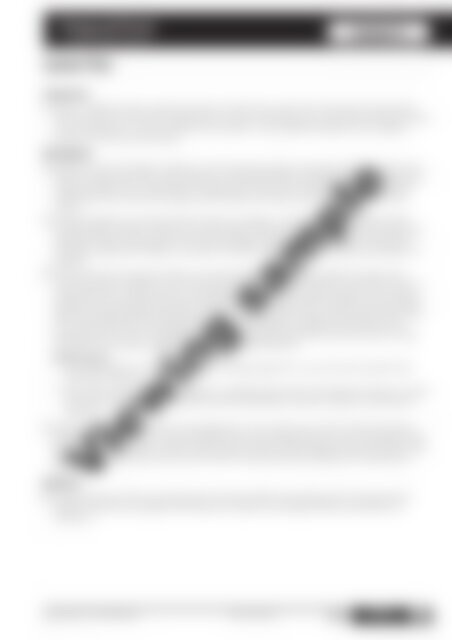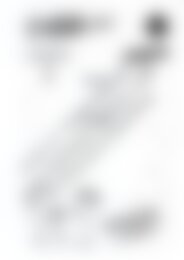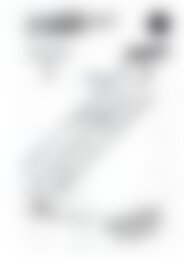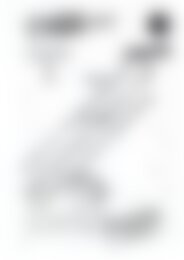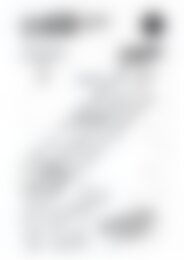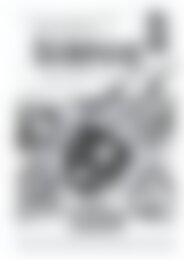PR-6170RUK Science A STEM Approach - Primary 1
Create successful ePaper yourself
Turn your PDF publications into a flip-book with our unique Google optimized e-Paper software.
Energy and Forces<br />
HOW THINGS MOVE<br />
Lesson 4<br />
Lesson Plan<br />
Introduction:<br />
1. Place a cardboard ramp used during Lesson 3 at the front of the class. Ask pupils If I placed two<br />
objects at the top of this ramp, which types of motion could they use to travel down the ramp? (They<br />
can roll, slide, spin or bounce.) What causes objects to roll at different speeds and for different<br />
distances? (Their size and shape.)<br />
Development:<br />
2. Display a small, rectangular wooden construction block, a large, rectangular wooden construction<br />
block, an empty tissue box, a full tissue box, a small teddy bear, a toy doll, a plastic sandpit scoop,<br />
a plastic sandpit sieve, a beanbag and a plastic sports cone. How do these objects move? (They<br />
slide.) Why do you think these objects slide? Explain that objects often slide if they have a flat<br />
surface.<br />
3. Display a digital copy of page 54. Point to the two objects in the first row and ask Which object<br />
will slide faster? Conduct a class vote to tally pupils' predictions about which object they think will<br />
slide faster. Repeat the question for all pairs of objects. Conduct another vote to record pupils'<br />
predictions about which object in each pair will slide further and record the tally at the bottom of<br />
page 54.<br />
4. Divide the class into groups of five or six and give each group a ramp (created in Lesson 3), a<br />
small, rectangular wooden construction block, a large, rectangular wooden construction block, an<br />
empty tissue box, a full tissue box, a small teddy bear, a toy doll, a plastic sandpit scoop, a plastic<br />
sandpit sieve, a beanbag and a plastic sports cone. Pupils experiment to find how size and shape<br />
affect how objects slide by placing two objects at the top of their ramp and letting go at the same<br />
time. Pupils should be encouraged to try the same two objects multiple times to ensure their<br />
observations are correct. Using page 55, pupils individually record their observations by circling<br />
the object that is heavier, lighter, faster and travelled the furthest.<br />
Differentiation<br />
• Less able pupils may work as a group to complete page 55 or can work with an adult to test<br />
each pair of objects.<br />
• More able pupils may be encouraged to complete page 55 then find additional objects and see<br />
how their size and shape affect how they slide. Pupils can record their objects on the back of<br />
page 55.<br />
5. Watch the video at . This video shows cartoon animal characters<br />
attempting to slide down a snowy hill before searching for objects they can use to help them slide.<br />
Discuss why the characters couldn't slide down the snowy hill at the beginning and how they used<br />
objects to help them slide. Discuss the movement made by the duck before he eventually slid<br />
down the hill.<br />
Viewing sample<br />
Reflection:<br />
6. Using a think-pair-share, pupils discuss the question What things change how an object slides?<br />
Pupils should be encouraged to think about an object's size, weight and the surface that it is<br />
sliding on.<br />
www.prim-ed.com – Prim-Ed Publishing 978-1-912760-14-5 <strong>Science</strong>:<br />
Infants A <strong>STEM</strong> AP<strong>PR</strong>OACH 53


